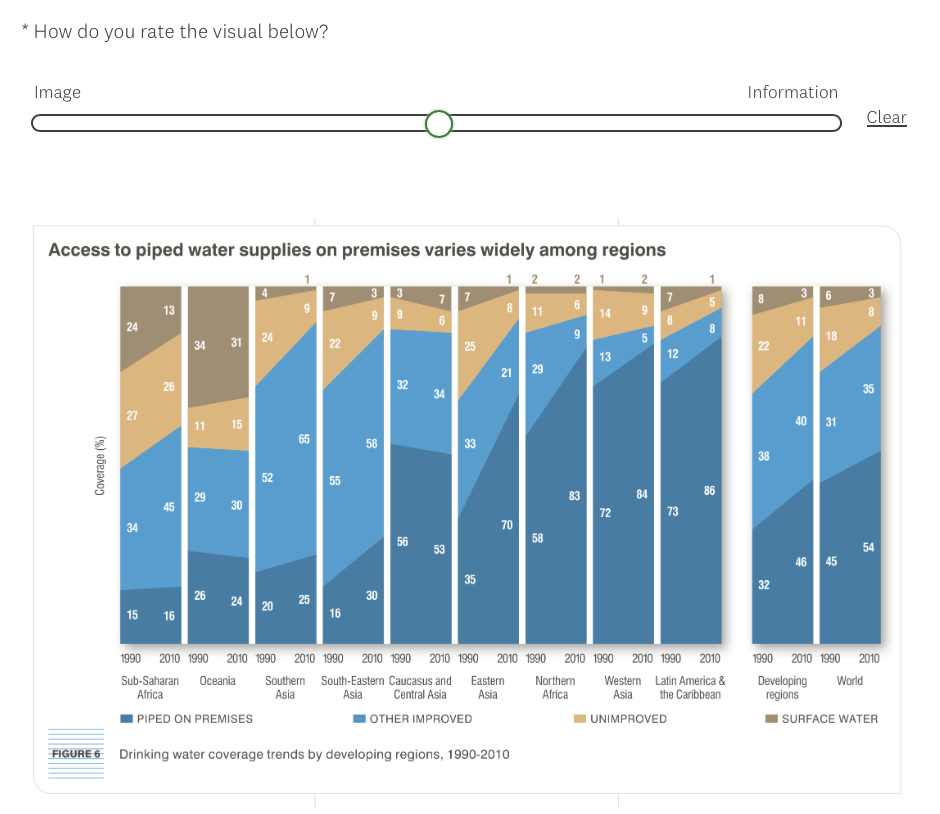Image or Information? Examining the Nature and Impact of Visualization Perceptual Classification
Anjana Arunkumar, Lace M. Padilla, Gi-Yeul Bae, Chris Bryan
DOI: 10.1109/TVCG.2023.3326919
Room: 105
2023-10-26T03:24:00ZGMT-0600Change your timezone on the schedule page
2023-10-26T03:24:00Z

Fast forward
Full Video
Keywords
Information Visualization; Human-Centered Computing; Perception & Cognition; Takeaways.
Abstract
How do people internalize visualizations: as images or information? In this study, we investigate the nature of internalization for visualizations (i.e., how the mind encodes visualizations in memory) and how memory encoding affects its retrieval. This exploratory work examines the influence of various design elements on a user's perception of a chart. Specifically, which design elements lead to perceptions of visualization as an image (aims to provide visual references, evoke emotions, express creativity, and inspire philosophic thought) or as information (aims to present complex data, information, or ideas concisely and promote analytical thinking)? Understanding how design elements contribute to viewers perceiving a visualization more as an image or information will help designers decide which elements to include to achieve their communication goals. For this study, we annotated 500 visualizations and analyzed the responses of 250 online participants, who rated the visualizations on a bilinear scale as 'image' or 'information.' We then conducted an in-person study (n = 101) using a free recall task to examine how the image/information ratings and design elements impacted memory. The results revealed several interesting findings: Image-rated visualizations were perceived as more aesthetically 'appealing,' 'enjoyable,' and 'pleasing.' Information-rated visualizations were perceived as less 'difficult to understand' and more aesthetically 'likable' and 'nice,' though participants expressed higher 'positive' sentiment when viewing image-rated visualizations and felt less 'guided to a conclusion.' The presence of axes and text annotations heavily influenced the likelihood of participants rating the visualization as 'information.' We also found different patterns among participants that were older. Importantly, we show that visualizations internalized as 'images' are less effective in conveying trends and messages, though they elicit a more positive emotional judgment, while 'informative' visualizations exhibit annotation focused recall and elicit a more positive design judgment. We discuss the implications of this dissociation between aesthetic pleasure and perceived ease of use in visualization design.